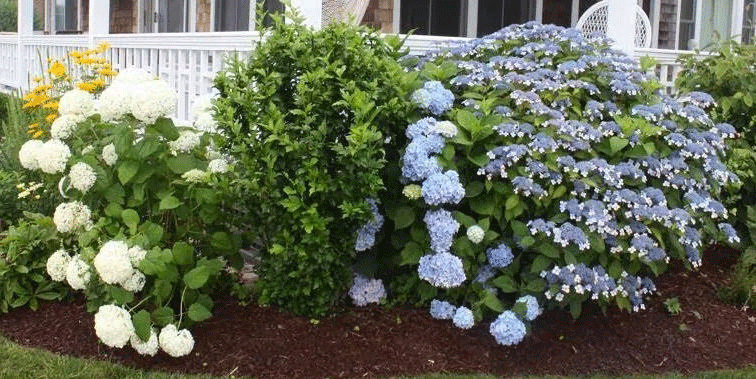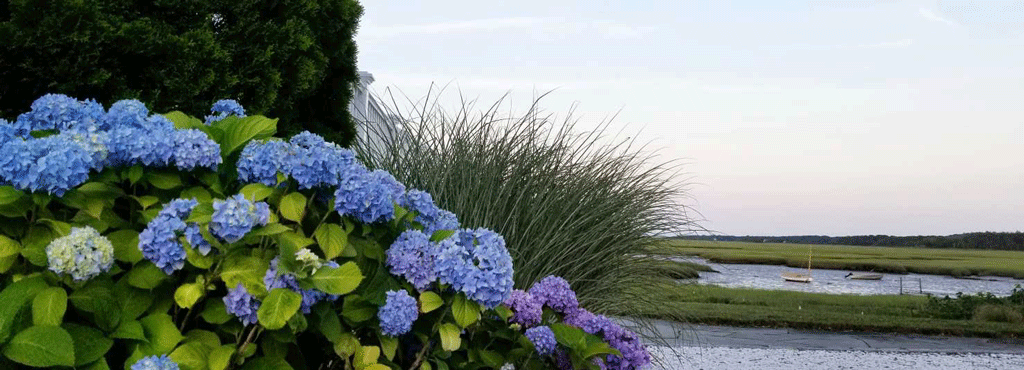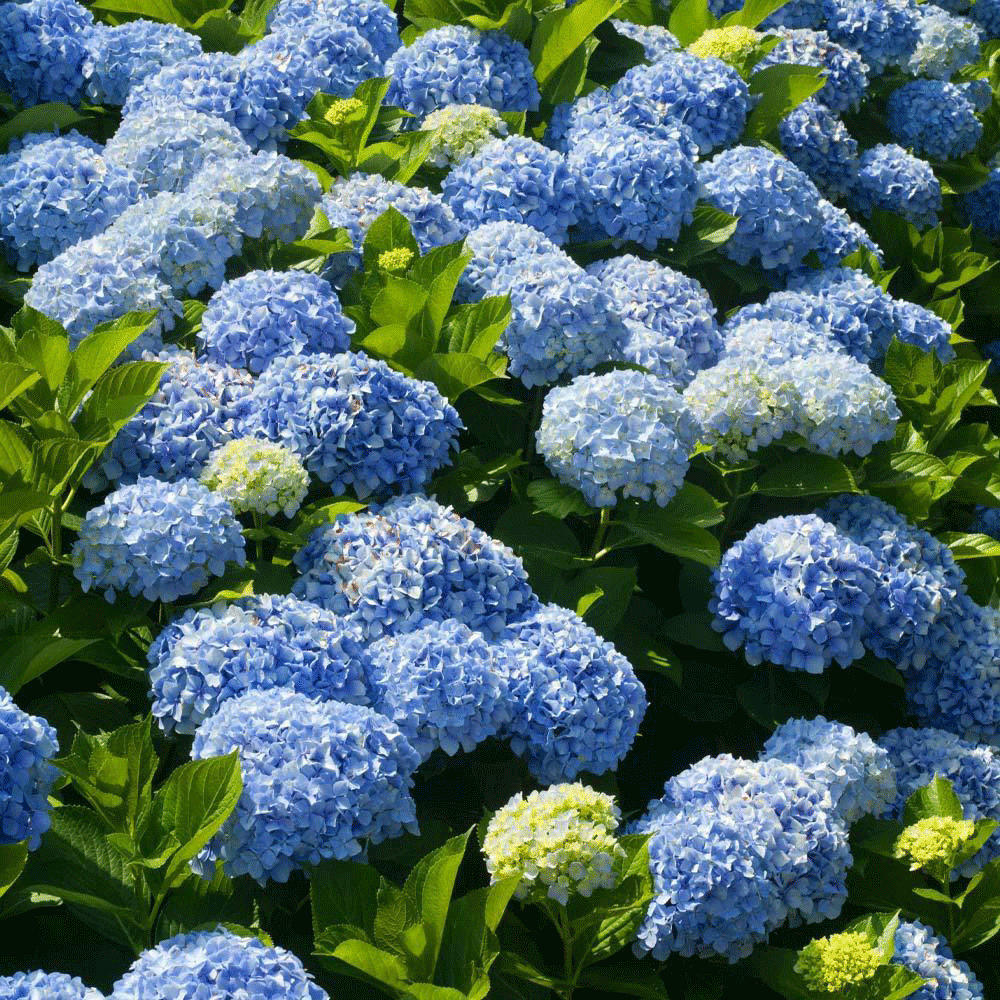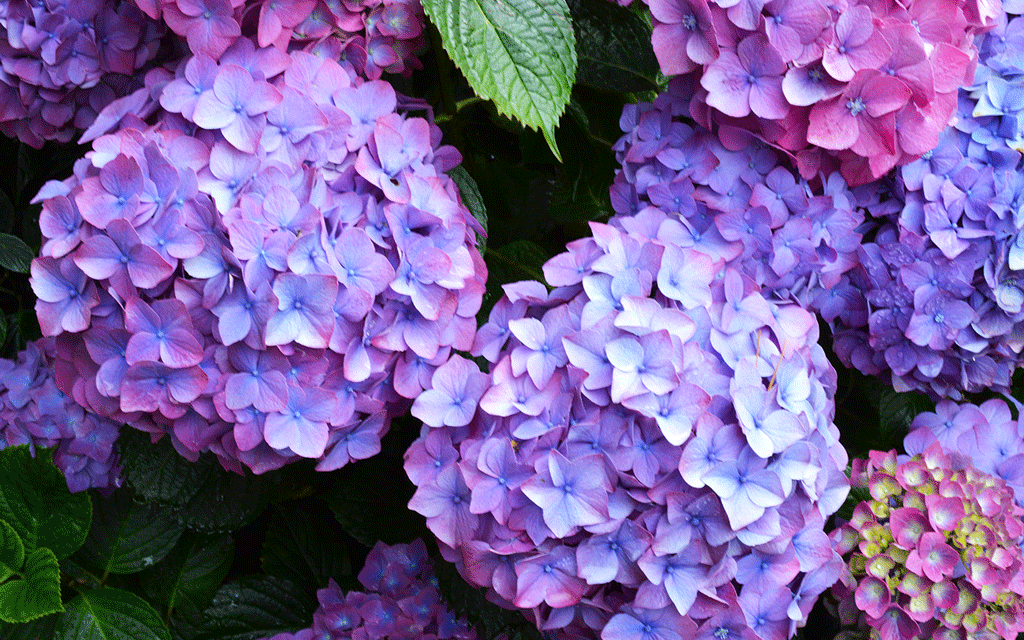
Sun

Water
However, don’t over water
Fertilize
Apply a 10-10-10 slow-release fertilizer early in the spring before the hydrangea starts to leaf out. Be sure to work it into the soil and water well. I prefer an all natural, organic fertilizer. Repeat the application after the bloom season ends.
Mulch
Apply a 3” layer of mulch all around the shrub’s dripline (the outer edge of the branches) in the spring. Be careful to leave an inch or so around the base of the plant. Mounded mulch can cause rot and insect damage.

Deadhead
Deadhead the hydrangeas throughout the season to encourage more blooms just as you would any other flower. Use sharp pruning shears and cut at a 45° angle being careful not to crush the stems. Prune dead flowers back to the main stem. Flowers that are left after they’re done blooming will dry and attempt to go to seed, thus ending the flowering cycle.
Pruning
Here’s the tricky part, some hydrangeas bloom on old wood (many macrophylla varieties) and need to be carefully pruned. Prune out the dead and never prune any living branches later than late summer. Prune hydrangeas that bloom on current year’s wood (Arborescens varieties) in early spring before the shrub produces new growth. Hydranges pruned back to 2” to 3” produce more blooms than those that aren’t pruned.
Click to read Sandi’s last post: “Selecting Plants for Your Garden”







